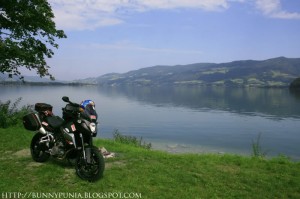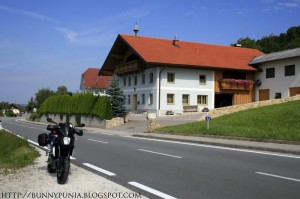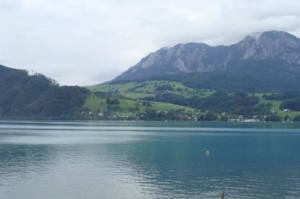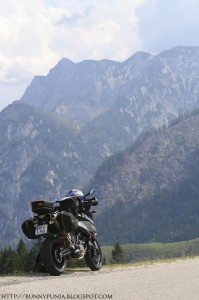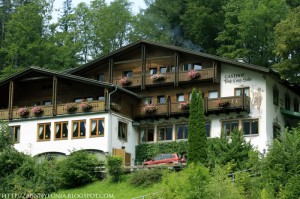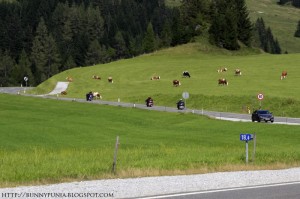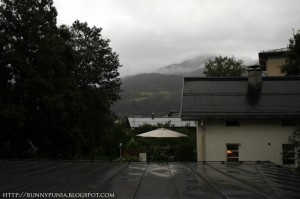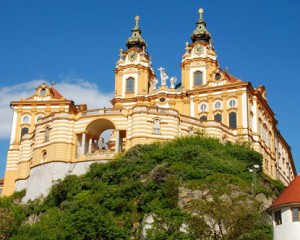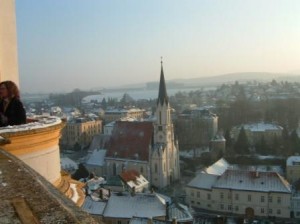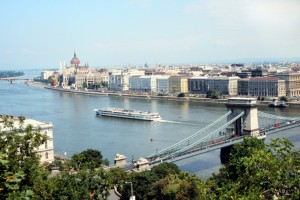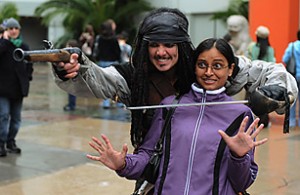This article is written by Bunny Punia , one of India’s leading bike enthusiasts and a travel photographer based in New Delhi
Although this trip took place in August 2009, I had been wanting to share the memories with you guys. In fact, it also may serve as a guide for those would want to tour the Alps in the best possible weather, ie, in and around the month of August.
PREFACE:
It all started in 2008 when I was invited to Austria by Bajaj and KTM for a feel of what would be coming to India soon
– KTM Bikes – Duke for a day!
Though I hardly rode for like 200km, what I experience that day left a lasting impression in my heart and made me plan the ride of my life. After hundreds of emails and phone calls, the morning of 28th August 2009 saw me land in Salzburg, the capital of Austria. This was it – my first real solo ride outside India.
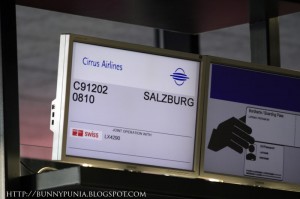 THE BIKE:
THE BIKE:
My previous interaction with the KTM guys helped a lot. They were very supportive about the whole ride and even went a step ahead and decided to give me the new 990 SMT for this week long trip. I couldnt have asked for me!
THE TRIP BEGINS: 28th August:
Mumbai – Zurich – Salzburg – Mattighofen – mondsee – st. gilgen – strobl – postlam – rigaus – golling – bischofshofen – dienten – lend – zell am see : 195km
Before starting my trip, i had requested my seat to be on the right so that i could have a glimpse of where I would be riding – the Alps
When I landed in Salzburg, I was feeling like a overjoyed kid, waiting to ride his new cycle. This international trip was something different, something I had only thought of in dreams. The planning had taken months and finally I was here, in KTM land, all ready for a ride of my life.
After I collected my baggage, it took just around 10 minutes for me to see the orange KTM logo – thanks to Martin who was kind enough to have come to pick me up. We straight away left for the KTM factory, Mattighofen, around 30min away.
On the way, we stopped at a fuel pump to pick up something that helped me immensely – a road map  . This was my first purchase on the trip and instantly gave me a fair idea of ‘super expensive’ Europe.
. This was my first purchase on the trip and instantly gave me a fair idea of ‘super expensive’ Europe.
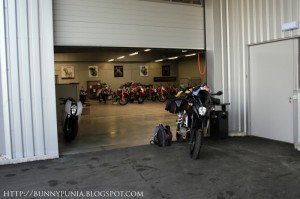
Fifteen mins later, we were there – a line up of KTM bikes including the sexy RC8 had me excited and then i saw it – the machine that would be my companion for the next one week – the beautiful SMT 990.
The KTM guys were nice enough to have arranged three saddle bags and a tank bag ready for me. Yes, it took me a good twenty mins to put all my clothing in them and start rolling. The map was put in the see-thru plastic cover of the tank bag.
This was it – the time had come. After months of planning, i was finally ready to hit the European highways, the Alpine curves and experience something completely different….
I had ridden and driven on the wrong side of the road on earlier occasions and hence it didnt take me long before getting used to the road rules here – completely opposite to what you have here in India. But I really wanted to get used to was the high saddle height of the SMT. Even at 6 feet, i had a hard time touching my feet down. Plus the punchy power delivery and the first time I went hard on the throttle, the front just lifted! This machine, I thought to myself would be fun for the next few days 
Yes, i was a little nervous about riding in Europe and the first thing i did was get myself the ten day Austrian road tax sticker.
My plan for the day was to hit Zell Am See (lake side town) for the night. Martin, the KTM guy, had told me of a few good places to ride thru this day and the map I had bought earlier this day made things easier for me. Within minutes, I couldnt help but stop for a photo-op
Clear skies and no hills? Yes, i was looking around for the Alps to start. And hence, i carried on…
Riding in Europe, specially this part can be fun as well as boring. Fear of speeding made me stick to the limit but at the same time, the inviting longish curves and the handling of the bike meant i was grinning inside my lid. Soon, I reached Mondsee lake and stopped for, yes, pictures!
There were a lot of caravans parked by the side of the lake with mostly old couples around. Either they were sun bathing or swimming in the crystal clear waters.
The plan was to continue to Strobl, from where i would take a right through a private toll road and visit Postlam, from where i would get my first real good view of the Alps and boy was i loving this road…
This was also my first incline section and trust me, exiting hair pins bends in 1st on this bike is something! There was hardly any traffic but soon i started coming across bikers – yes, there are more bikers on some roads than cars / vans / SUVs.. Postlam wasnt more than a small stop for tourists, but due to its height, the views were amazing. See for yourself..
After taking endless pictures and using my zoom lens to the max, i carried on, coming down from Postam and taking the small road to Rigaus. Enroute, clicked some more snaps.
At Bischofshofen, i took the 164 to Dienten and then a right to Zell Am See via Lend.
I also came across my first mountain pass of the trip, though at just 553 meters above mean sea level, it was a little disappointing
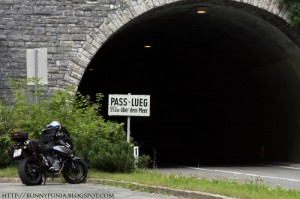 Hotels in this part of the world look very very pretty
Hotels in this part of the world look very very pretty
I continued ahead. I started feeling hungry and then came across a small resting area by the side of the road – a perfect place to grab a bite and also enjoy the bikers passing by, some of which were scraping away easily, super easily.
This was just the beginning of the trip and I was going crazy shooting away pictures. When they say Europe is beautiful, they mean it!
Finally after 195km, i reached Zell Am See. I had been to this lake side town on two occasions earlier. It did take me a good half hour to find a decent and cheap place for the night and finally when i found it, it was worth it.
It started raining by the time i was back in my room – my biggest fear of the trip
I ate my ‘dinner’ sitting in the balcony, planning out the next day’s ride. I finally hit the bed at 8pm local time, praying hard for a dry day ahead….
Bunny Punia
September 2009
http://www.bcmtouring.com/forum/travelogues-around-world-f68/indian-me-austrian-machine-ktm-990-smt-around-european-alps-t20182/
